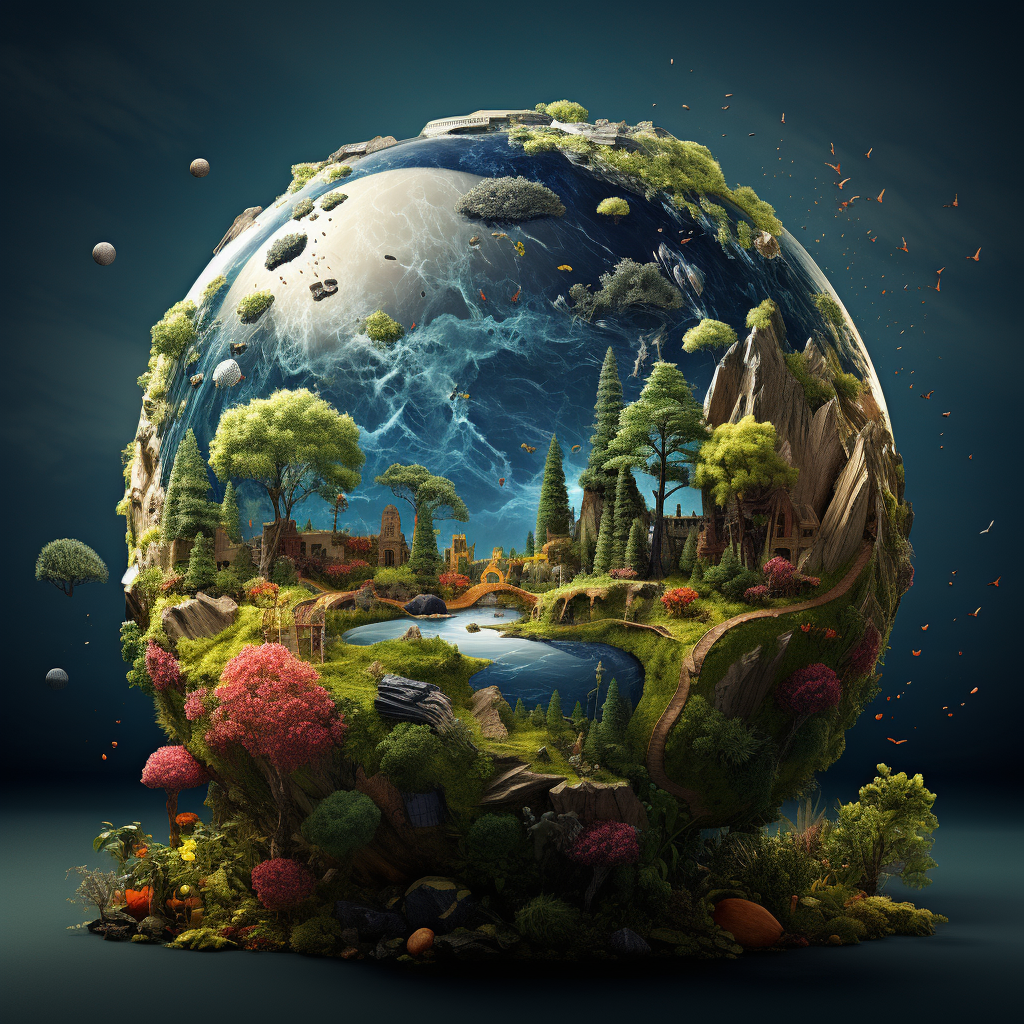
What is the one thing that most individuals across the globe fear? The answer is God. However, the conception of God varies significantly across different religions.If you wish to discourage someone from a particular action, presenting a compelling argument often proves effective. For instance, if a religion specifically instructs its followers to abstain from polluting rivers, a significant number of individuals may adhere to this directive.
Surrendering to an explicit set of religious norms often initiates abstinence from certain practices. It’s interesting how these divine influences cease us in our tracks and lead our actions.
A similar paradigm shift, I believe, might be the saviour our rapidly deteriorating environment needs. While it may seem eccentric or novel, it may be time to revive an ancient practice – worshipping nature Gods.
In historical times, the epitome of divinity was reflected not only in human-like deities but also within the essence of nature itself. Our ancestors associated divine entities with varying elements of nature, creating a reverence that perhaps ensured the preservation of these natural wonders. Today, with the state of our planet, it seems like the perfect time to infuse that ancient wisdom into our modern lives.
Here are some instances of human beings worshipping natural entities
Sun Worship: Many ancient cultures worshipped the sun, including the ancient Egyptians who regarded the sun god Ra as the king of all gods and the giver of life. Similarly, in ancient Greece and Rome, the sun God was known as Helios and Sol, respectively.
Moon Worship: The moon was also a significant deity in many ancient civilizations. The Inca civilization of ancient Peru worshipped the moon Goddess Mama Killa while the ancient Greek goddess of the moon was Selene.
River Worship: In ancient Egypt, the Nile was considered to be a God and they celebrated the annual flooding of the Nile. The Ganges River is considered sacred in Hinduism, and to this day it is worshipped and people bathe in it to cleanse their sins.
Mountain Worship: Various ancient cultures held mountains in high esteem due to their towering presence. In ancient Greece, Mount Olympus was believed to be the home of the gods. For the Incas, certain mountains were believed to be the dwelling place of powerful deities.
Sea Worship: The sea and its powers were reverenced by many ancient people. The ancient Greeks worshipped Poseidon as the God of the sea, while the Romans held Neptune in similar regard.
Earth Worship: Ancient cultures such as the Celts and Greeks worshipped the Earth. They saw her as a mother figure who provided them with life and sustenance. The Greeks called her Gaia, and the Romans knew her as Terra.
Wind/Storms Worship: Storms and wind were also worshipped by ancient civilizations. The Greeks, for example, worshipped Aeolus as the God of wind, and Zeus as the god of the sky and thunder. The Norse pantheon includes Thor, the God of thunder and lightning.
Fire Worship: This practice was prevalent amongst the ancient Zoroastrians who would worship at a fire altar. They believed fire to be a medium through which spiritual insight and wisdom could be gained.
Plant and Tree Worship: The ancient Celts and many indigenous cultures worldwide worshipped trees, believing them to be symbols of life and fertility. The ancient Greeks and Druids also often held ceremonies and rituals in sacred groves of trees.
Animal Worship: Ancient Egyptians believed animals to be incarnations of the Gods and often worshipped them. Cats were associated with the Goddess Bastet, crocodiles with Sobek, and birds such as the falcon and ibis were associated with Horus and Thoth, respectively.
Let’s bring back the Nature Gods

A mosaic of nature-oriented Gods, I believe, could imbue our society with a higher sense of respect for the environment. Encouraging this mindset would ultimately lead to a more balanced world where, just like our ancestors, we are conscious of our actions’ implications on nature.
Even though this ancient approach towards spirituality may seem quite unconventional in our scientifically advanced world, its core philosophy of cherishing and safeguarding nature could indeed provide a fresh perspective on our struggle with environmental damage.
Why not give it a try? Maybe we’ll discover a new connection with the environment – a relationship that’s spiritual, and respectful, and helps us in our journey towards a more sustainable world.

While the concept of worshipping Nature Gods might seem archaic or superstitious to some, in truth, it provides a spiritual and symbolic representation of the interconnectivity and interdependence of humanity and nature. Instead of seeking domination over nature and its resources – a sentiment propelled by the anthropocentric perspective that has brought the environment to its current state – recognizing and revering nature gods offers a path to co-existing in harmony with all living beings.
This return to our roots doesn’t necessarily mean we adopt the entirety of our ancestors’ lifestyle or discard scientific reasoning. It’s about finding a balance and integrating ancient wisdom with modern innovation. It pleads us to respect nature, not because of fear but because we perceive it as a divine entity deserving of our admiration and protection.
So, the next time when the sun shines brilliantly in the sky, or a river flows placidly, or the wind rustles leaves, or rains bestow prosperity on parched lands, let’s take a moment to appreciate and worship these wonders of nature.
Even if we don’t adopt ritualistic practices, a mental gesture of acknowledgement and respect could make a significant difference.
Wouldn’t it be refreshing, though, to see a renewed popularity in honouring Mother Earth and her many forms, much like our ancestors did?

It may seem a naïve proposal to some, given the colossal environmental challenges we face are real and pressing. But shifting attitudes and perceptions towards nature, remembering we’re only a part of a much larger biosphere, could certainly be a cornerstone in our collective efforts for a more sustainable future.
Let’s commence a spiritual resurrection- a new relationship rooted in mutual respect and understanding with nature. It’s time we endowed the environment with the sanctity it richly deserves.
